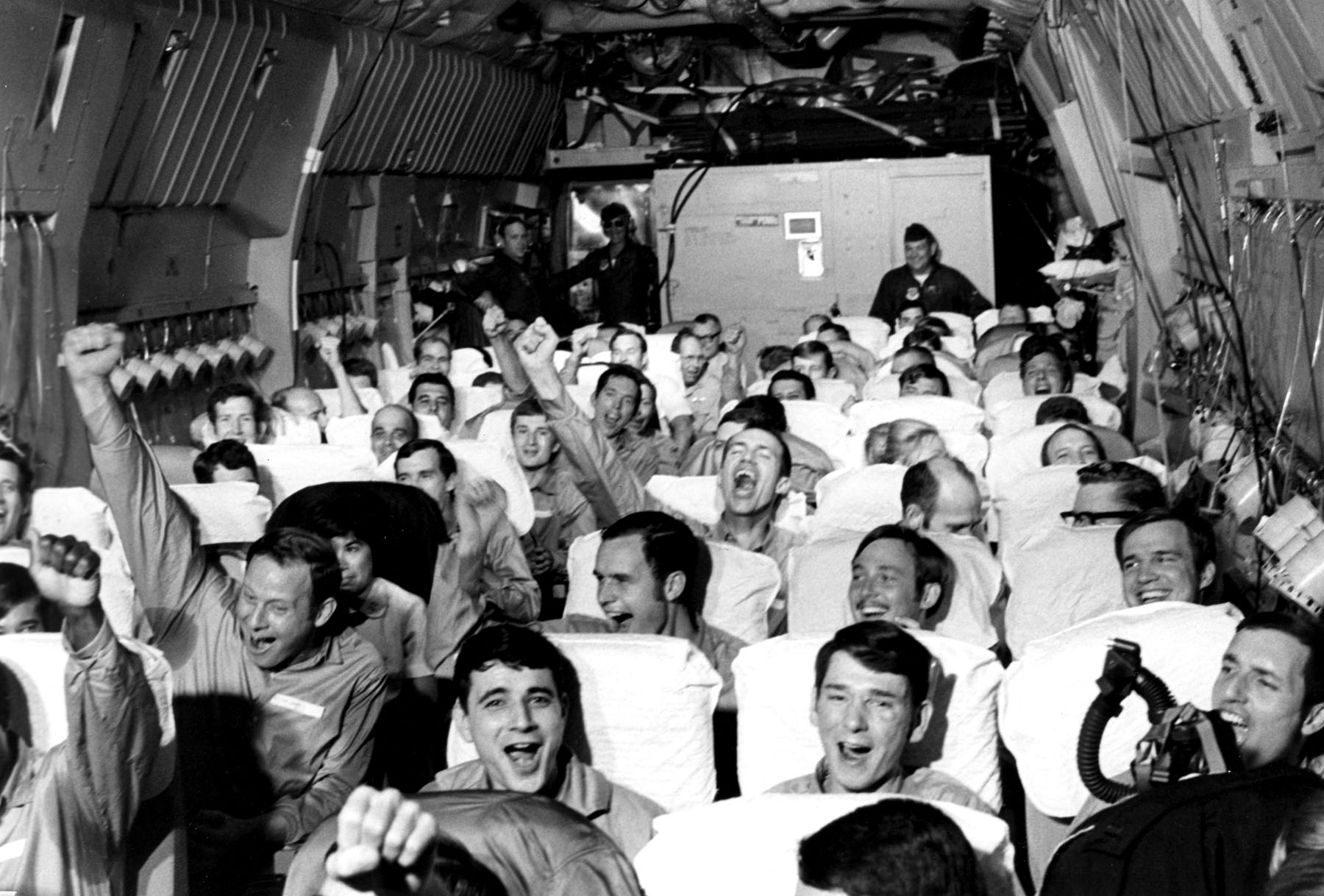
Friday, March 29, marked the 51st anniversary of the completion of a mission that brought home 591 American Prisoners of War after the Vietnam War. I was a young serviceman at the time. These are my memories of one of those “returns” as told at the Huffington Post eleven years ago.
I do not remember the exact date — I believe that it was late February or early March — but I do remember that it was a pleasant, sunny spring-like day on the Mississippi Gulf Coast.
It may have even been a weekend because my wife and I had both our children with us, one of school-going age. But then again, the occasion was so joyous that we may have kept our 10-year-old-son home that day.
We were part of a rather large crowd assembled on the tarmac — the “flight line” — at Keesler Air Force Base in Biloxi, Mississippi. I had just returned from a two-year tour of duty in Germany. I had recently become the proud father of a brand-new baby girl. The long, cruel Vietnam War was finally over. Life was good.
Just a few weeks before that day, on Feb. 12, 1973, North Vietnam had started releasing the American prisoners of war (POWs) — 591 of them. Heroes who had endured months and years of captivity, torture, torment and depravities in the notorious North Vietnamese prisons, some held in cages — all in sheer hellholes.
Among the waiting crowd a short distance from the rest of us was a group of mostly women and children with flowers in their hands and tears in their eyes.
For them, the war wasn’t quite over yet. For them life wasn’t quite good, yet.
They were the wives, sons, daughters, parents, brothers and sisters of some of the bravest men one could imagine, American POWs.
Their war wouldn’t be over, life wouldn’t be good again until the doors of the C-9A “Nightingale” that had just touched down and that was now slowly taxiing into position, were opened and until those brave men were once again safely in their loving arms.
The Nightingale’s arrival that day was part of Operation Homecoming, an operation, no, a mission, that would bring home almost 600 POWs.

While large C-141 Starlifters first brought back the POWs from North Vietnam to American soil, the smaller Nightingales would fly nearly 400 returning Vietnam POWs to medical facilities near their homes.
Finally, the rear door of this Nightingale opened and the ramp was lowered.
The first POW, the ranking member, walked down the ramp and briskly saluted the welcoming officer and the American flag.
Others started walking down the ramp, some on crutches, some with a limp in their gait, many gaunt and languid, but all tall and proud — all military men.
Some kissed the ground.
The cheers grew louder, the tears flowed more freely. But the families would have to wait a little while longer.
The salutes had to be rendered, the welcome home words had to be spoken, and the speeches had to be made.
And there they stood. These strong men who had not seen their loved ones for an eternity but who now could see them standing 40, 50 yards from them. It must have been sheer torture for them. But what a different and welcome kind of torture after what they had experienced.
Then, finally, finally, the long wait was over. Suddenly these men ran, hopped as fast as their injuries and crutches would let them, towards their loved ones. Their loved ones could not run fast enough towards them. It was a scene of sheer, delightful, unforgettable maelstrom.
For these men, it was finally time to hold their children once again in their arms — some for the first time — to touch their wives’ lips, to hug their loved ones after such a long, long time — after such an almost unbearable ordeal.
For their loved ones, the nightmare, the uncertainty, the suffering was finally over.
For all of them, the war was finally over. It was time to try to make life good again.
It has been 40 years since those unforgettable scenes. I may have forgotten some of the details, the images of that day may have gotten grainier, as the photo on top, but I will never forget the courage and stoicism of those men, the joy and tears of those who could not run to them fast enough, the emotions of that morning and the tears of all of us.
















